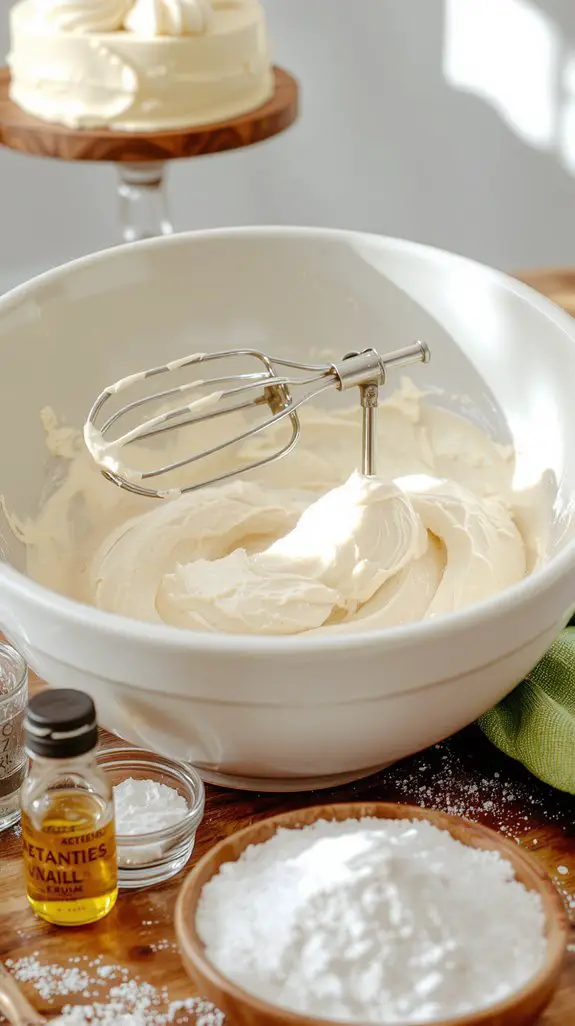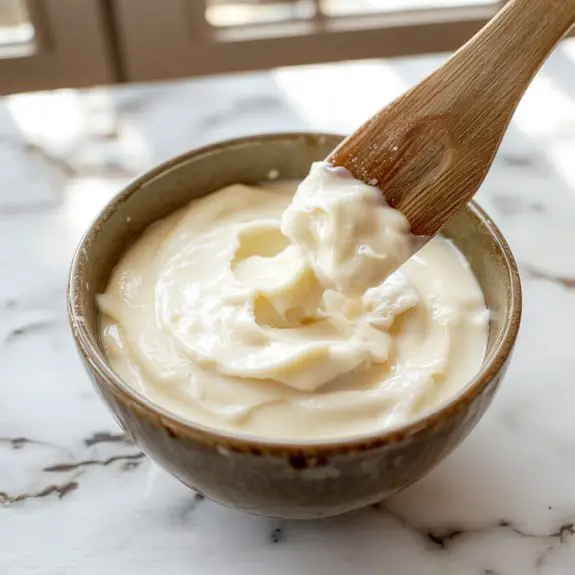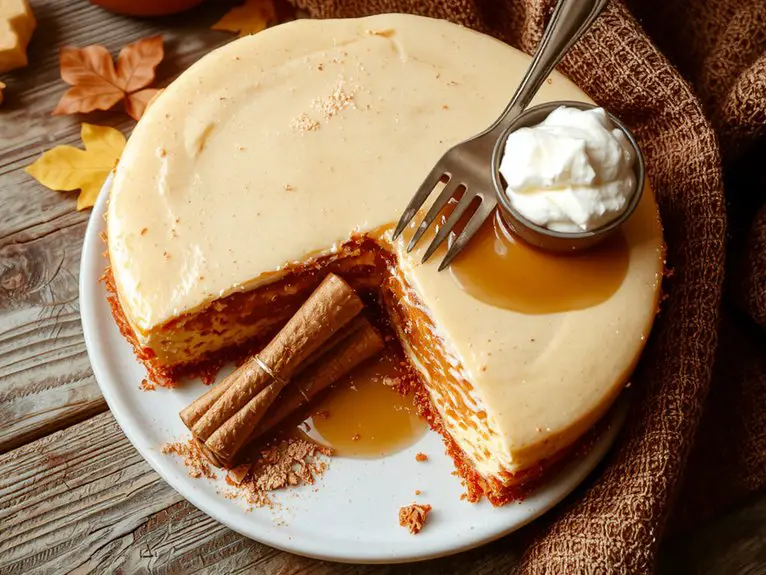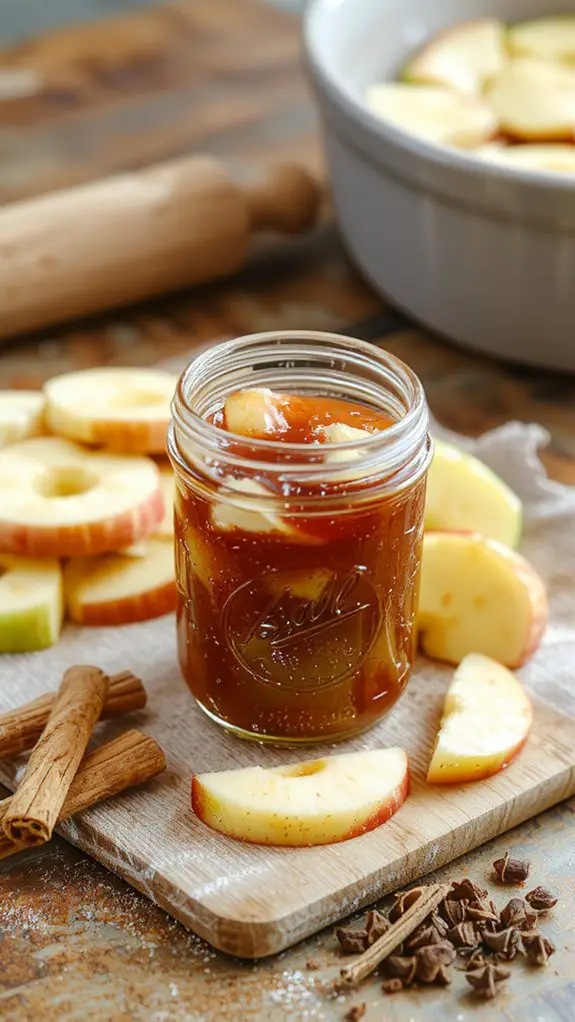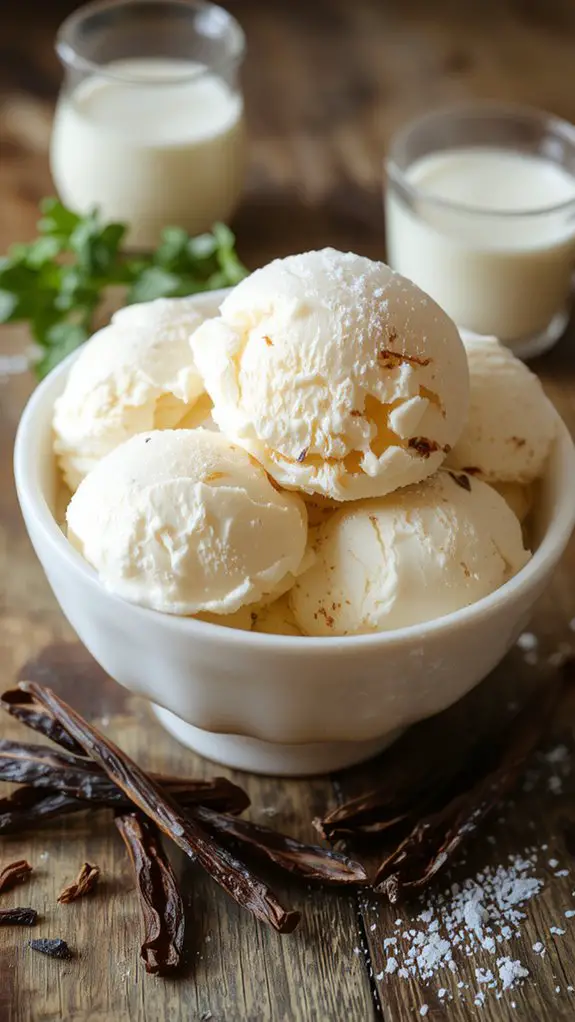Recipe
If there’s one thing I can say with absolute confidence, it’s that this buttercream frosting will change your baking game forever. Smooth, creamy, and unbelievably versatile, it’s the kind of frosting that makes everything it touches better—whether it’s a classic birthday cake, a batch of cupcakes, or even a spoon dipped straight into the bowl.
Made with just butter, powdered sugar, and a splash of vanilla, this recipe keeps things simple but delivers a rich, luscious texture that’s impossible to resist. I’ve been making this for years, and it’s my go-to for everything from holiday desserts to last-minute cravings.
The secret? Whipping it just long enough to make it light and airy, so it melts in your mouth with every bite. Trust me, once you try this, you’ll never settle for store-bought frosting again.
Ingredients
Buttercream frosting is all about getting the basics right—quality ingredients make all the difference. Start with unsalted butter to control the saltiness, and opt for pure vanilla extract for that rich, authentic flavor. Powdered sugar guarantees a smooth texture, but sift it first to avoid lumps. Here’s what you’ll need:
- Unsalted Butter: Room temperature is key—soft butter blends seamlessly for a silky finish.
- Powdered Sugar: Sift before using to keep the frosting lump-free.
- Pure Vanilla Extract: Skip the imitation—this is where the flavor shines.
- Heavy Cream or Milk: Adds creaminess; use heavy cream for a richer texture.
- Pinch of Salt: Balances the sweetness and enhances the overall flavor.
Pro Tips:
- Swap heavy cream for milk if you prefer a lighter consistency.
- For a twist, try almond or citrus extract instead of vanilla.
- Always use room temperature butter—cold butter will ruin the texture.
- Add a pinch of salt even if using salted butter to balance the sweetness.
Non-Negotiables:
Pure vanilla extract and sifted powdered sugar are essential—don’t cut corners here.
How to Make the Best Classic Vanilla Buttercream Frosting
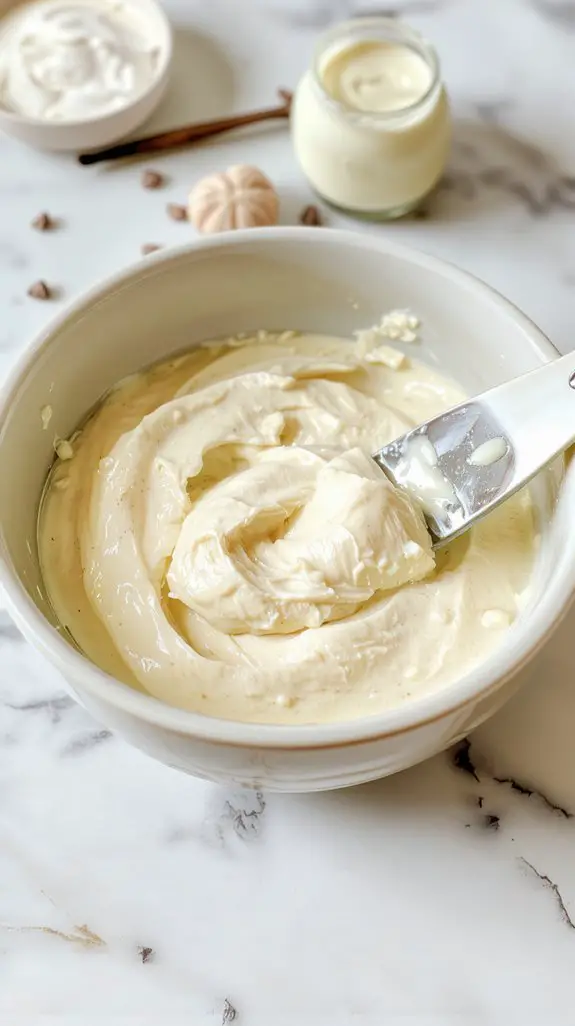
- Prepare ingredients: Guarantee your butter is softened to room temperature—this makes it easier to whip and creates a smoother texture. Cold butter won’t incorporate as well and could result in lumps.
- Whip the butter: In a large mixing bowl, beat the softened butter on medium speed for 2-3 minutes until it’s light and fluffy. This step incorporates air, giving your frosting a creamy, spreadable consistency.
- Add powdered sugar: Gradually add the powdered sugar, about ½ cup at a time, beating on low speed after each addition. This prevents a sugary cloud from erupting in your kitchen and guarantees even mixing.
- Incorporate vanilla and cream: Add the vanilla extract and 1-2 tablespoons of heavy cream or milk. Beat on medium speed until fully combined. If the frosting is too thick, add more cream 1 teaspoon at a time until you reach your desired consistency.
- Adjust consistency: If your frosting is too thin, add more powdered sugar, 1 tablespoon at a time. If it’s too stiff, add a splash of cream. The perfect buttercream should be smooth and hold its shape but still spread easily.
- Optional tinting: If you want colored frosting, add gel food coloring drop by drop, mixing thoroughly until you achieve your desired shade. Gel coloring works better than liquid to avoid altering the frosting’s texture.
- Use or store: Frost your cake or cupcakes immediately, or store the buttercream in an airtight container in the fridge for up to a week. Let it come to room temperature and re-whip before using.
Nutrition
Buttercream frosting is a sweet and creamy topping that adds flavor to cakes and cupcakes. Here’s the nutritional breakdown per serving (2 tablespoons):
| Calories | Total Fat | Saturated Fat | Cholesterol | Sodium | Total Carbs | Sugars | Protein |
|---|---|---|---|---|---|---|---|
| 140 | 7g | 4.5g | 20mg | 15mg | 19g | 18g | 0g |
Chef Tips
When I’m making buttercream frosting, I always make sure to use room-temperature butter because it blends more smoothly and creates a creamier texture. Sifting powdered sugar prevents lumps, ensuring a silky consistency.
I add vanilla extract slowly to control flavor intensity. For vibrant colors, I use gel food coloring sparingly. Finally, frosting cakes at room temperature helps it spread evenly without tearing the crumb.
Frequently Asked Questions
Can I Use Margarine Instead of Butter?
I can use margarine instead of butter, but it’ll change the flavor and texture. Margarine’s lighter and has more water, so the frosting might not be as rich or stable as it’d be with butter.
How Long Does Buttercream Frosting Last?
I’ll tell you, buttercream frosting lasts about two weeks in the fridge if stored properly. It’s best to keep it in an airtight container. I wouldn’t freeze it for more than three months, though.
Can I Freeze Buttercream Frosting?
Yes, I can freeze buttercream frosting. I’d store it in an airtight container or freezer bag for up to 3 months. When I’m ready to use it, I’ll thaw it overnight in the fridge and rewhip it.
Is Buttercream Frosting Suitable for Vegan Diets?
Buttercream frosting typically isn’t vegan since it’s made with butter and milk. I’d need to use plant-based butter and a non-dairy milk alternative to make a vegan version, but it’ll still taste creamy and sweet.
Can I Add Food Coloring to Buttercream Frosting?
Yes, I can add food coloring to buttercream frosting. I’d use gel or paste colors for vibrant shades without thinning the frosting too much. A few drops at a time until I get the desired hue works best.

